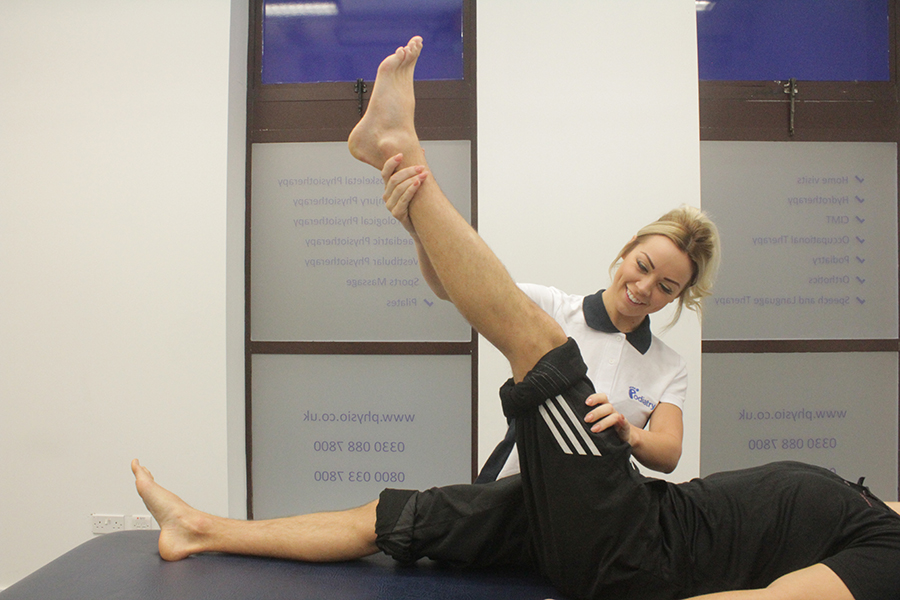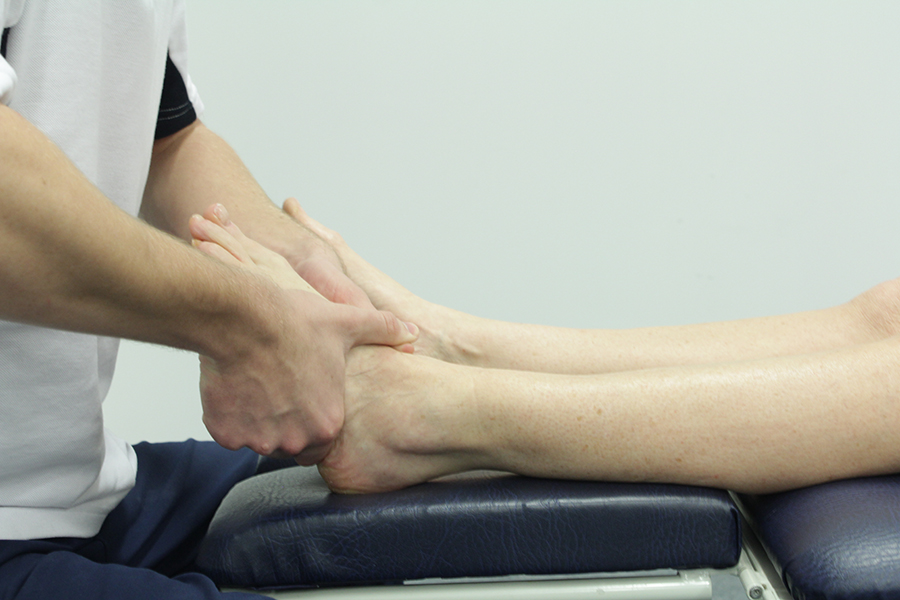Bursitis
Bursitis of the foot refers to inflammation of one or more of the bursae. Bursae are fluid filled sacs that act as cushions that lubricate and reduce friction over bony bumps and in between structures. Too much friction leads to inflammation of the bursa and the result is pain, which can interfere with your daily activities.
What is bursitis?
Bursitis is a condition whereby the bursa, which is a fluid filled sac that
protects areas of the body that are prone to friction (e.g. between
muscles, tendons and bony bumps), becomes inflamed.
In the foot there are lots of bursae, which act as gliding surfaces that
reduce friction. The most common sites for bursitis in the foot include:
- The back of the heel (where the Achilles tendon inserts into the bone)
- The big toe joint (first metatarsophalangeal bursitis)
- The space in between the second and third metatarsal
- On top of the toe joints (secondary to hammer toes)
What causes bursitis?
Bursitis may be caused by the following:
- Injury, caused by:
- Too much pressure/friction (footwear)
- Activity
- Acute trauma
- Infection, however this typically only occurs in those who have a weakened immune system
- Condition's that predispose the bursa to inflammation, for example:
- Rheumatoid arthritis
- gout
What are the signs and symptoms of bursitis?
The signs and symptoms of bursitis in the foot include:
- Redness
- Swelling
- Corns
- Callus
- Discharge
- Pain and tenderness
- Walking and other activities may be uncomfortable
- There may be some deformity, for example:

Types of bursitis
In the foot the main types of bursitis are:
Retrocalcaneal bursitis
Retro calcaneal bursitis refers to inflammation of the bursa at the back of
the heel.
There are two bursae at the back of the heel, one lies on top of the
Achilles tendon insertion and when this becomes inflamed it is referred to
as superficial bursitis. The other bursa at the back of the heel lies
beneath the Achilles tendon, when this bursa becomes inflamed it is
referred to as deep retrocalcaneal bursitis.
Superficial bursitis is associated with a bony prominence such as a
Haglund's deformity, it may also occur secondary to friction from footwear.
Deep retrocalcaneal bursitis is most often associated with an arthropathy,
for example, rheumatoid arthritis.
First metatarsophalangeal joint bursitis
First metatarsophalangeal joint (first MPJ) bursitis refers to inflammation
of the bursae of the big toe joint. In first MPJ bursitis the following
bursae may become inflamed:
- On top of the big toe joint: associated with hallux rigidus
- Beneath the big toe joint: associated with a plantarflexed first ray
- The outside of the big toe joint: associated with hallux abducto valgus (bunion) adventitious. The same type of bursitis may also be experienced at the little toe joint as a result of a tailor's bunion (bunionette).
Bursitis secondary to hammer toes
Bursitis secondary to hammer toes occurs as a result of footwear rubbing on
the toe joint as a result of the flexed position the toe has adopted.
Bursitis secondary to a hammer toe may appear alongside a corn at the same
site, due to pressure and friction.
How is bursitis diagnosed?
One of our podiatrists will diagnose bursitis based on a thorough medical history, signs and symptoms and an examination of the area.
Benefit of podiatry for bursitis
If you have bursitis Chiropody.co.uk can help you by providing treatment and advice that will produce the following benefits:
- Reduction in inflammation
- Reduction in pain
- Improvement in comfort
- Removal of corns and callous
- Improved gait
- Cause, not just the symptoms treated
What would podiatry for bursitis involve?
Podiatry for bursitis would involve a thorough history as well as an examination of the area. Once a diagnosis of bursitis has been made, the following treatments may be recommended in order to reduce any pain and inflammation. If poor biomechanics are a contributing factor to your bursitis you may be referred for a biomechanical assessment:
- R.I.C.E: rest, ice, compression and elevation
- Padding
- Silipos
- Orthoses
- Advice and education
- Corn treatment
- Callus treatment
- Footwear review
- Anti-inflammatory advice
- Surgery (severe cases)

Summary
Bursitis of the foot is a condition that is characterized by the
inflammation of a bursa. Bursae are fluid filled sacs that reduce friction,
they are found over bony prominences and in between muscles and tendons. In
the foot the most common sites for bursitis are; the big toe joint, the
back of the heel, and on top of the toes (secondary to a hammer toe).
Bursitis has a number of causes, however too much friction is typically the
root cause. If you think you have bursitis visit one of our podiatrists,
they will be happy to help devise a treatment plan that will aim to reduce
any pain and inflammation, allowing you to continue with your activities
comfortably.
To arrange an assessment with one our podiatrists please email office@chiropody.co.uk or call 0330 088 4222.
Save 5% by booking an appointment online.



We work with:

Individuals

Organisations

Health professionals
Get in Touch!
0330 088 4222
If you would like to speak to one of our specialists then please complete this form.
We are open 7 days a week








